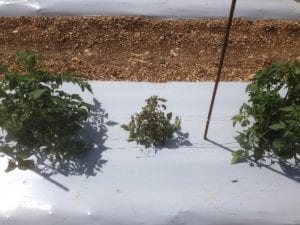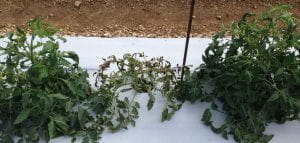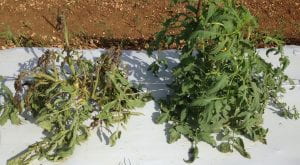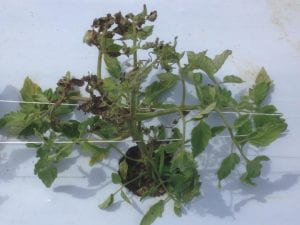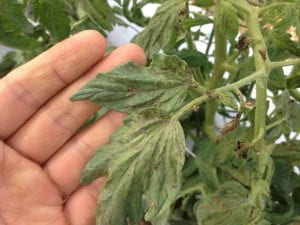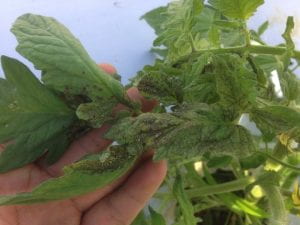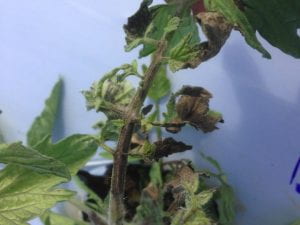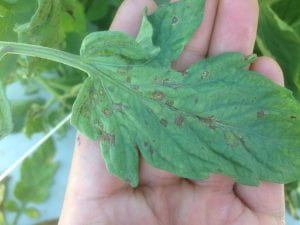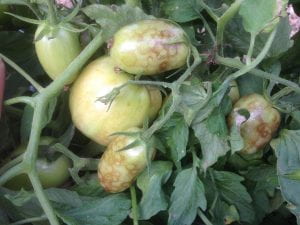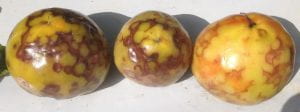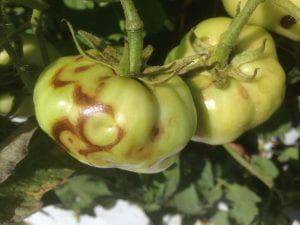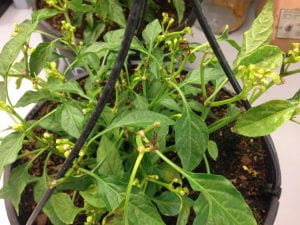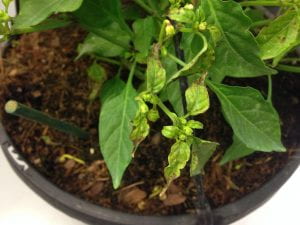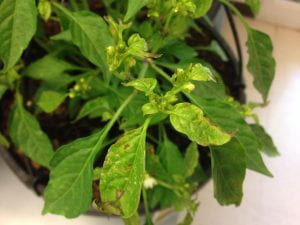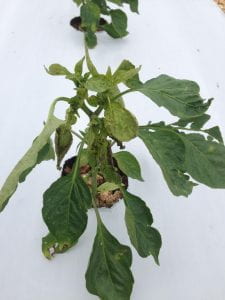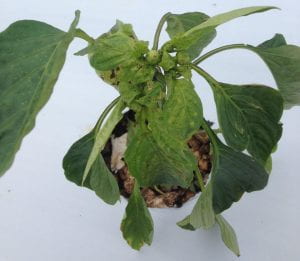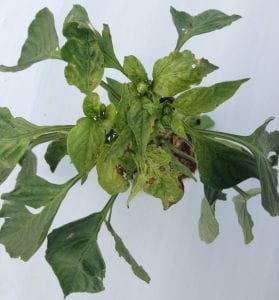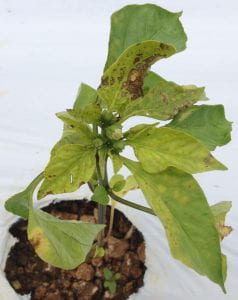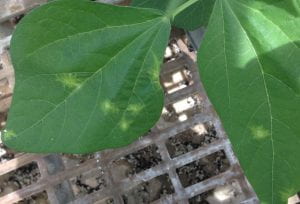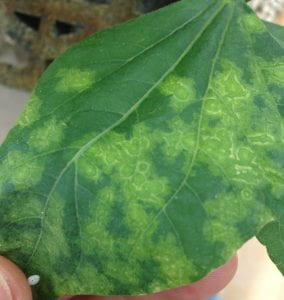New Virus of Concern for Several Crops
Updated August, 2020.
This factsheet contains information on the following:
- Symptoms and other considerations
- Photographs: Tomato | Pepper | Beans
Additional Information:
- University of Florida Tomato Chlorotic Spot Virus factsheet
- University of Florida Tomato Virus Presentation (2012)
Introduction
While Tomato Chlorotic Spot Virus (TCSV) has primarily been affecting tomatoes in south Florida, it has the potential to develop elsewhere. This virus has a wide host range and can be very destructive. Florida growers have sustained great losses, necessitating greater awareness of this important disease. TCSV was confirmed on tomato in a high tunnel in Ohio in 2013 and in a field planting on Long Island, New York, in 2016, documenting its ability to affect crops outside of Florida.
TCSV is related to Tomato Spotted Wilt Virus (TSWV) and Impatiens necrotic spot virus (INSV), which already occur widely in the US. All are tospoviruses and are spread by thrips. Groundnut ring spot virus (GRSV) is another new tospovirus. Of these three which occur in Florida, TCSV is now the dominant one. Western flower thrips have been increasing in occurrence in parts of the northeastern US due to insecticide resistance, thus providing an opportunity for TCSV to be readily spread if it is introduced to the region. Common blossom thrips has also been confirmed to be an important vector of TCSV.
In the US, TCSV was first detected in Florida in 2012, but may have been present a few years earlier and misdiagnosed as GRSV. In just two years it was causing extensive plant loss with symptoms developing about three weeks after transplanting. In some diseased plantings, nearly all plants have been observed as affected.
Symptoms
TCSV causes symptoms that are similar to those caused by TSWV. Both viruses cause upper leaves to develop brown (necrotic) tissue often in patterns as is typical with viruses. Chlorotic spots, ringspots, and mosaic also occasionally develop with TCSV. This disease can progress rapidly causing bronzing, wilting, deformation of leaves, and death of terminal leaves and stems. Necrotic rings develop on fruit rendering them unmarketable. When infection occurs before flowering, plants can be severely stunted and produce few if any flowers, and eventually die. In the 2013 outbreak in Ohio, only fruit developed symptoms. Disease symptoms appear about 3-4 weeks after infection based on time following mechanical inoculation.
Long Distance Movement
TCSV could be introduced to the northeast in seedlings of tomato or another host plant produced where the virus is already established. Global movement of plants has become commonplace. In Ohio, ornamental plants were also being produced in the high tunnel with affected tomato plants and thrips were numerous.
Other Susceptible Plants
The name suggests TCSV is a disease of tomato; however, when a plant is specified in a virus name it designates the first host identified for the virus. TCSV has been detected in common (snap) bean, coriander, lettuce, long bean (Vignaun guiculata), peanuts, pepper (bell and chili), several weeds (purslane and Solanaceous weeds, in particular jimsonweed), and ornamental plants including impatiens, lisianthus, annual vinca (Catharanthus roseus), hoya (Hoya wayetii), four o’clock (Mirabilis jalapa), and Christmas cactus (Schlumbergera truncate). Tomatillo, tobacco, petunia, eggplant, and escarole were found to be susceptible as well when inoculated as part of a host range study. The host range could be wider, similar to TSWV.
TCSV Detection
Currently-available immunostrips for detecting TSWV, such as those marketed by Agdia Inc., will also give a positive result for a plant infected by TCSV because these viruses are so closely related. Thus it is not possible to determine if a plant is infected with TCSV or TSWV with the immunostrips. Procedures have been developed to distinguish them as part of a national project on TCSV.
Report Virus Symptoms
If you see symptoms that could be TCSV or TSWV, please report to Meg at mtm3@cornell.edu or 631-727-3595 or your local extension specialist. Knowledge about occurrence of a new virus is critically important for management, thus testing is an important component of the project.
Management
Plant viruses can be difficult to manage because insect vectors often transmit viruses quickly, limiting the usefulness of insecticides. Focus is on avoiding the virus, thus the current emphasis on monitoring to obtain understanding of TCSV occurrence.
Origin
Tospoviruses are capable of exchanging segments of their genome (reassortment). When a plant is infected by more than one tospovirus, reassortment can occur and result in the generation of a new tospovirus. There are eight species recognized presently. TCSV was detected in Brazil and Argentina before Florida.
Photographs
Images courtesy of Dr. Shouan Zhang, Tropical Research & Education Center, University of Florida, IFAS, Homestead, FL 33031-3314
Symptoms on Ornamental and Bell Pepper
Symptoms on common Bush Bean cultivar ‘Pony Express’
More information/prepared by:
Margaret Tuttle McGrath
Associate Professor
Long Island Horticultural Research and Extension Center (LIHREC)
Plant Pathology and Plant-Microbe Biology Section
School of Integrative Plant Science
College of Agriculture and Life Sciences
Cornell University
mtm3@cornell.edu



